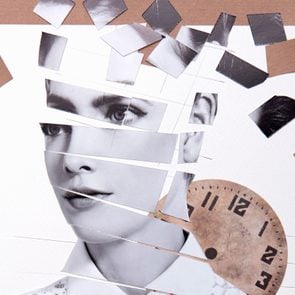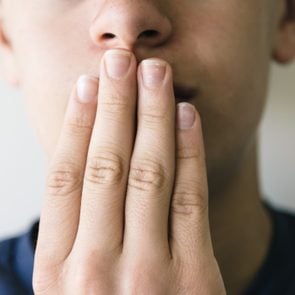This Is Exactly What Cultural Appropriation Means
Updated: May 28, 2024

What happens when cultures collide? A backdrop of systemic racism can turn innocent cultural exchange into insidious cultural appropriation. Here's a closer look at what has become a central part of our racial lexicon.
By now, most of us have heard the phrase “cultural appropriation,” but many people don’t have a firm grasp of what it actually means. It’s more than cooking and eating food from other cultures or buying a kimono while on holiday in Tokyo and wearing it out to a nightclub when you get back home. Cultural appropriation is more specific than simply dabbling in customs that originate somewhere else. It happens when people from a dominant culture (e.g., White people) exploit artifacts, practices, and ideas from a subordinate culture (Black people, Latinos, Native Americans, Muslims, people of Asian descent) without permission, compensation, or acknowledgment. For cultural appropriation to stick, there must be a history of discrimination and marginalization that continues into the present. Here’s how you can identify it—and how you can make sure you’re not guilty of it. Doing that is just one of the ways you can fight racism every day.
The origins of cultural appropriation
Although the concept of cultural appropriation has existed as long as there have been cultures to appropriate, the term itself was coined by academia in the 1980s. It popped up in discussions about Western colonialism and how it affected the relationships between European-descended cultures and other global cultures. The idea, though, had been taking shape well before anyone attached two words to it. In his 1976 book Some General Observations on the Concept of Cultural Colonialism, Kenneth Coutts-Smith explored the idea of “class appropriation” and “cultural colonialism” and their intersection without mashing up the two phrases into one.
In February 2020, the website Parlia, which bills itself as “the encyclopedia of opinion,” suggested that perhaps we should have gone with a derivation of the phrase Coutts-Smith introduced in his book’s title: “Cultural appropriation is when a dominant culture borrows or steals elements from a minority culture. Cultural appropriation fails to adequately encapsulate the colonial aspect of cultural appropriation. Therefore, cultural colonization would be a better term.”
Cultural appropriation vs. Cultural appreciation
Globalization has made cultural cross-pollination inevitable, but there’s a difference between showing one’s appreciation for another culture (cultural appreciation) and exploiting it (cultural appropriation). When Paul Simon recorded his landmark 1986 Grammy-winning album Graceland with South African musicians, he not only acknowledged his world-music influences, but he compensated them both creatively and commercially by involving them in the recording process. It lent the project a distinct air of authenticity. That’s cultural appreciation—respectful and reverential. It’s incorporating outside influences into your work and acknowledging from where they came. Cultural appropriation involves pillaging, especially for profit or cool cred, without respect or reverence, like non-Black kids who talk and dress in the hip-hop style because it’s trendy but refuse to engage with Black people in everyday life—or worse. Here are 20 acts of everyday racism that don’t get talked about enough.
Crossing the line into cultural appropriation
The fashion industry is a main offender when it comes to cultural appropriation. When Victoria’s Secret sends a White model down the runway wearing a Native American headdress, as it did in 2012, the company is plundering from a culture that has historically been demeaned and discriminated against—and commercializing it and sexing it up through a filter of Whiteness for mass appeal. “It’s disrespectful to the Indigenous community to send a lingerie-clad model down the runway with a feathered headdress. Vogue publishing photos of a White model in geisha-inspired outfits—in its diversity issue, no less—probably isn’t the best way to pay homage to Japanese culture,” Julia Brucculieri wrote in HuffPost in 2018.
Pop culture’s “influences”
The film and music industry have infamously committed countless acts of gross cultural appropriation over the years. The 1915 film The Birth of a Nation celebrated the Ku Klux Klan using White actors in blackface to portray Black characters, while the animated 1941 Disney film Dumbo featured White voice actor Cliff Edwards speaking African American vernacular English as Dandy Crow. Elvis Presley, the so-called king of Rock ‘n’ Roll, became a superstar by adopting a Black style of singing and performing covers of songs written or originally performed by Black artists (“Don’t Be Cruel,” “Hound Dog”) at a time when radio was resistant to playing records by Black artists and Jim Crow laws around the country were still relegating Black people to second-class citizenship. For more on our country’s history, check out these essential books about race relations in America.
Cultural appropriation in music is more than a White singer crooning soulfully. It’s a systemic code of creative conduct by which White singers and record companies run by White executives benefit via White privilege from the sound and talent of Black artists and other minority groups without the creators of the source material receiving commensurate commercial opportunities or mainstream visibility and acceptance. Ariana Grande is one artist who’s recently come under fire for this. “Some commentators have grumbled that her ‘blaccent’ and even her spray tan seemed part of an old story about White people profiting off of Black aesthetics to project a sense of edge without feeling any of the associated struggle,” The Atlantic’s Spencer Kornhaber wrote in a 2019 article about Grande and her hit “7 Rings.”
The hair problem
Some White people dismiss charges of cultural appropriation the same way they challenge charges of racism—by trying to turn the tables. They may cry, “Reverse racism!” or say, “Funny how you don’t criticize women of color for straightening their hair,” which Marc Jacobs wrote on Instagram in 2016 to critics of his using White models wearing dreadlocks on the runway. Jacobs missed the point. The crux of cultural appropriation, like racism, is subjugation. So, a Black woman isn’t appropriating White culture when she wears straightened hair, which isn’t even exclusive to White people.
In response to Jacobs, HuffPost writer Zeba Blay wrote in a 2016 essay: “It erases history and context, it tries to find an equivalency in Black women straightening their hair after centuries of trying to assimilate while told their natural hair is ugly and unprofessional to White women rocking du-rags, cornrows, and bantu knots because it looks ‘cool’ (like the Kardashians, who are celebrated for this).” As of this year, California prohibits schools and businesses from preventing people from wearing their hair in its natural form. This is just one of the new laws that could affect you in 2020.
Is reverse cultural appropriation a thing?
Cultural appropriation does not work in reverse because White people have historically had all the opportunities they’ve withheld from other races and ethnic groups. Subjugation is a necessary element of cultural appropriation. The side being appropriated must be subject to systemic and systematic racism or discrimination. Jacobs was talking about cultural assimilation, and his comment actually underscores the subjugation Black women have traditionally experienced in the United States. It’s in the language and names, White slave owners withheld from Black slaves while forcing an Anglicized language and names, as well as religion, on them. Black women straighten their hair in order to conform to a standard of beauty established by the White status quo. Afros and cornrows were deemed too ethnic when Black people were the only ones sporting them, but once White people started wearing them, they became an acceptable trend.
“I always experience a flash of annoyance when I see White girls wearing cornrows,” Andrea Artebery wrote in the New York Times in 2015. “Maybe it’s because the hairstyle is being marketed as ‘new and trendy.’ Or it could be that I, as a Black woman, know it’s not a style White girls wore when I was growing up and that they often mocked me for wearing it.”
What doesn’t qualify as cultural appropriation?
It’s easy to go overboard labeling things as cultural appropriation when they’re actually something else. When people who are not Irish celebrate St. Patrick’s Day by marching in the parade or drinking too much, it’s not the same thing as a White person wearing blackface on Halloween. One is simply taking advantage of an excuse to party by celebrating a holiday that originated with a once-subjugated group that is now on an equal footing with the dominant one. Blackface, on the other hand, not only hearkens back to a custom historically used to denigrate Blacks, but the cavalier use of it by White people reinforces the inequities that persist between the races.
The same applied in 1973 when Cher put on a sexy belly-baring Native American getup for her “Half-Breed” video. “Non-Natives can ‘pretend’ to be Native for one day of the year, and it’s all the ‘cute’ or ‘sexy’ parts of being Native, but there are so many people who can’t just put on or take off the costume. They have to live with all the other aspects of being born Native,” Minnesota State University student Glory Ames told the Washington Post in 2019. Native Americans have been marginalized over the years and mostly written out of U.S. history books. For example, here are untold stories of Native American heroes you’ve probably never heard.
How to avoid cultural appropriation
If you’re White, before putting on a Native American headdress or rocking cornrows or dreadlocks on Instagram, consider three things. “Ask yourself the question, does the culture you’re imitating have a history of oppression? Are you benefiting from borrowing from the culture? Are you able to remove something when you get tired of it and return to a privileged culture when others can’t?” Moody-Ramirez, director of American studies at Baylor University, said in a 2019 Washington Post article. Even if you think your actions are harmless, the cumulative effect of countless others who think the same way can, in the long term, have a devastating mental and emotional effect on the people who become collateral damage when White people are having fun.
Appreciating and celebrating other cultures is not only acceptable—it’s encouraged. But someone from a privileged culture cannot appropriately pay homage to customs and traditions from subjugated cultures without acknowledging and respecting the source material. As a general rule, cat ears and a cowboy hat are always OK; blackface isn’t. Schools are finally getting the message.
For more on this important issue, see our guide to the Fight Against Racism.




















